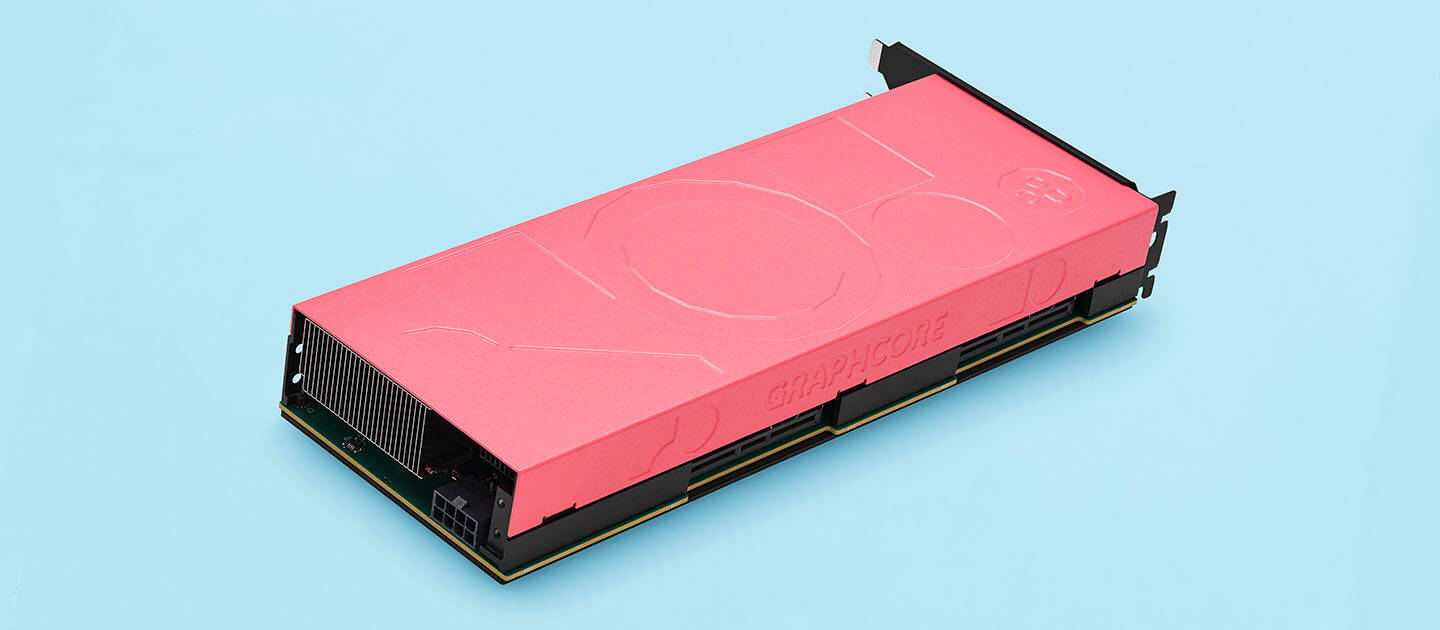Graphcore Makes China Push With Mk2 AI Chip Amid Financial Woes

British AI chip designer Graphcore has wrapped its two-year-old, second-generation Intelligence Processing Unit in new packaging for China and Singapore amid recently reported financial woes.
The Bristol, UK-based startup announced on Tuesday that its Colossus Mk2 GC200 IPU will be available in the new C600 PCIe card, making the processor compatible with servers beyond the company's pre-integrated M2000 IPU system.
The company said pre-orders are now open for the C600 card in China and Singapore, and it will be available through approved hardware partners in Graphcore-qualified systems. It didn't say whether the card will expand to other markets.
The C600 card was designed "in response to customer demand in markets where datacenter configurations, including rack size and power delivery, vary widely," said Chen Jin, Graphcore's vice president and head of China engineer, in a blog post.
"This highly versatile form-factor enables Graphcore customers to tailor their system setup, including host server / chassis, to their exact requirements," Jin added.
- Biotech firm: Graphcore IPUs faster for AI-based drug discovery than GPUs
- Graphcore's AI chips may not be as powerful as Nvidia's GPUs, but may provide good bang for your buck
- Nvidia watches Brit upstart Graphcore swing into rear-view mirror waving beastly second-gen AI chip hardware
- Nvidia names top US partners that fueled AI, accelerator hardware sales
It's not clear if Graphcore had to tune the C600 card to abide with the recent US export restrictions for advanced chips to China. While Graphcore is a British company, the export bans have extended to semiconductor companies far beyond American borders because the restrictions cover US manufacturing and design tools used to make most of the world's advanced chips.
The US restrictions have prompted Graphcore's much larger rivals to switch gears, with AMD halting sales of its MI250 GPU to China and Nvidia slowing down its A100 GPU to continue sales in the country. Biren Technology and Alibaba in China have also reportedly had to step down processing speeds for new GPUs.
Tech specs suggest it's good enough
Graphcore's C600 card is designed for AI inference workloads at low-precision number formats, capable of hitting up to 280 teraflops of 16-bit floating point (FP16) compute and delivering as much as 560 teraflops of 8-bit floating point (FP8) math.
The FP8 support is new for Graphcore, as it is for the rest of the industry. Intel, Arm, and Nvidia published the specification for FP8 in September. The goal of FP8 is to create a lower precision format for neural network training and inference that optimizes memory usage and improves efficiency while providing a similar level of accuracy to 16-bit precisions.
The C600 is a PCIe Gen 4, dual-slot card with a thermal design power of 185 watts. Up to eight of the cards can fit into a single server chassis, and they communicate directly using Graphcore's IPU-Link high-bandwidth interconnect cables. The C600's IPU-Link bandwidth is 256GB/s [PDF].
The Mk2 IPU inside the C600 card has the same 1,472 IPU cores and 900MB of in-processor memory when the second-generation IPU was first announced in 2020.
The C600 release comes not long after multiple reports have painted a gloomy picture for Graphcore. In September, the startup said it was planning job cuts due to an "extremely challenging" macroeconomic situation. The next month, The Times reported that investors had slashed Graphcore's valuation by $1 billion in the face of financial woes, including a terminated deal with Microsoft. ®
From Chip War To Cloud War: The Next Frontier In Global Tech Competition
The global chip war, characterized by intense competition among nations and corporations for supremacy in semiconductor ... Read more
The High Stakes Of Tech Regulation: Security Risks And Market Dynamics
The influence of tech giants in the global economy continues to grow, raising crucial questions about how to balance sec... Read more
The Tyranny Of Instagram Interiors: Why It's Time To Break Free From Algorithm-Driven Aesthetics
Instagram has become a dominant force in shaping interior design trends, offering a seemingly endless stream of inspirat... Read more
The Data Crunch In AI: Strategies For Sustainability
Exploring solutions to the imminent exhaustion of internet data for AI training.As the artificial intelligence (AI) indu... Read more
Google Abandons Four-Year Effort To Remove Cookies From Chrome Browser
After four years of dedicated effort, Google has decided to abandon its plan to remove third-party cookies from its Chro... Read more
LinkedIn Embraces AI And Gamification To Drive User Engagement And Revenue
In an effort to tackle slowing revenue growth and enhance user engagement, LinkedIn is turning to artificial intelligenc... Read more

